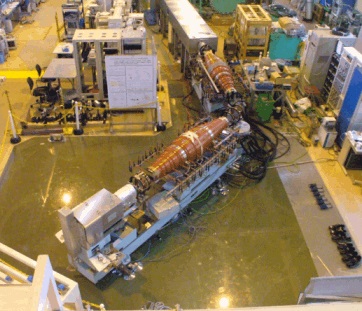
iNSE: Neutron spin echo spectrometer at JRR-3
By observing changes in the direction and velocity of neutrons scattered from a sample, we can extract the information of microscopic structure and dynamics of the sample. The neutron spin echo spectrometer, iNSE at the Japan Research Reactor (JRR-3) is a neutron scattering instrument capable of observing nanosecond-order dynamics in structures ranging from a few to several hundred nanometers.
News
- 2023 Aug 21
- JRR-3 has started operation for FY2023
- 2023 Apr 01
- iNSE website renewal
- 2022 Dec 24
- End of operation cycles of FY2022
Specification
Schematic of instrument
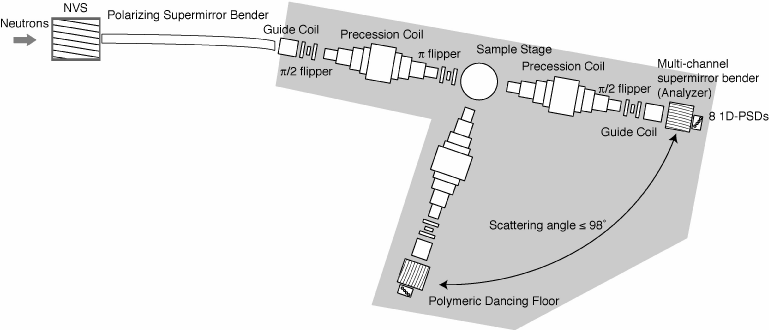
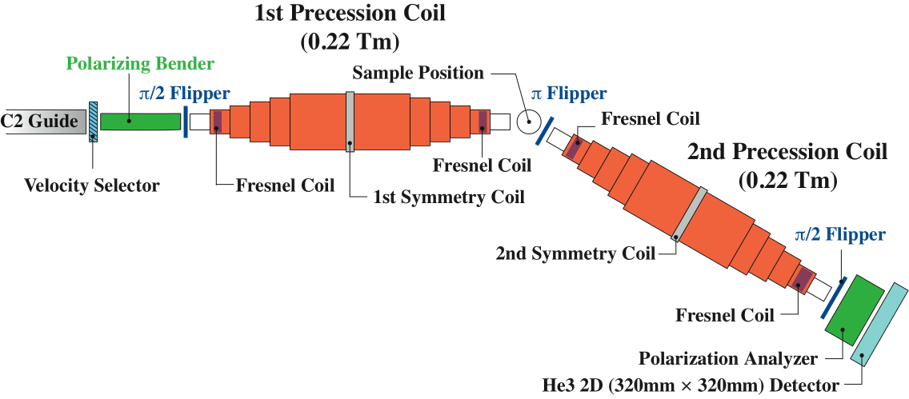
Specification
- Beam port:
- Cold neutron guide C2-3-1
- Monochromatization:
- Δλ/λ = 10 to 20 % by a neutron velocity selector
- Beam size:
- 4 cm (height) x 2 cm (width)
- Polarization:
- > 96 % by m=2.5 magnetic supermirror bender
- Wavelength range:
- 4 < λ < 15 Å
- Q range:
- 0.019 < Q < 1.5 Å-1
- in standard setup:
- 0.03 < Q < 0.2 Å-1
- Fourier time range:
- 0.02 < τ < 141 ns
- in standard setup:
- 0.16 < τ < 50 ns
- Precession coil length:
- 2.6 m
- Max. field integral BL:
- 0.22 T m
- Analyzer:
- 30x30 cm2 multi channel magnetic supermirror
- Detector:
- 32x32 cm2 3He multi wire detector
Q-t range
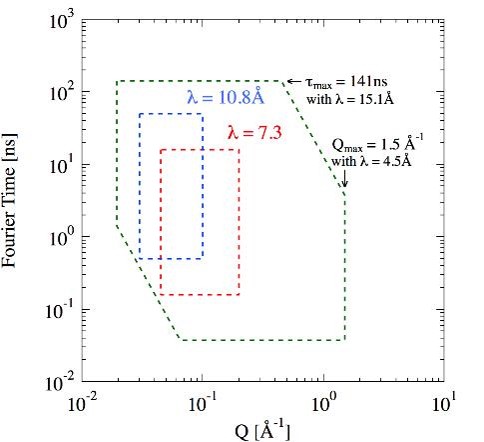
Because iNSE is still under commissioning, please inquire with the instrument responsible Dr. Oda (oda _at_mark_ issp.u-tokyo.ac.jp) at ISSP, UTokyo for the actually available Q-t region. In 2023, a measurement range of 0.03 < Q < 0.2 Å-1, 0.1 < τ < 20 ns is planned.
Standard sample cell
Rectangular quartz cell with stopper. Sample thickness: t = 4 mm, Sample volume: 4 mL, Internal dimensions: w22 x h45 x t 4 mm, also available with thickness t = 2 mm. Material: (body part) synthetic quartz glass
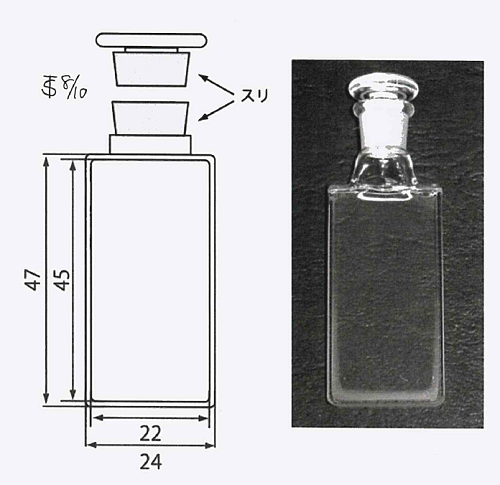
References
- [1] T. Takeda et al., "A neutron spin echo spectrometer with two optimal field shape coils for neutron spin precession", Nuclear Instruments and Methods A 364, 186-192 (1995)
- [2] M. Nagao et al., "Relocation and upgrade of neutron spin echo spectrometer, iNSE", Physica B 385&386, 1118-1121 (2006)
- [3] H. Endo, "What Can We Learn from Neutron Spin Echo?", Hamon Vol. 24, pp.206-209 (2014).
Publications
Contact
The JRR-3 reactor resumed its operation in July 2021, and iNSE has been working on the reboot and commissioning of the instrument during the operation cycles in 2021 and 2022. iNSE will continue the commissioning in the first half of FY2023, and user proposal experiments will be performed in the second half of 2023. For more information on the status of iNSE and how to use it, please contact the instrument responsible Dr. Oda (oda _at_mark_ issp.u-tokyo.ac.jp) at ISSP, UTokyo. Please refer to the Neutron Science Laboratory website ISSP NSL for information on proposal submission and pre-experiment procedures.
| Proposal No. | FY2023 accepted proposals |
|---|---|
| 23577 | 中性子スピンエコーによるマルチドメインタンパク質のドメイン運動の観測に向けて |
| 23581 | 界面活性剤が誘起する液-液相分離のメカニズムの解明 |
| 23576 | Elaborating the nano spatiotemporal dynamics of carrageenan gels and their mixtures using neutron spin echo |
| 23580 | 塩が誘起する有機溶媒水溶液の2次元流体的な臨界挙動 |
| 23578 | 中性子スピンエコー法による環動高分子/クレイナノコンポジット系のダイナミクス研究 |
| 23579 | 勾配磁場RFを用いた広帯域波長対応π/2スピンフリッパーの開発 |
| 23405 | iNSE(中性子スピンエコー分光器)IRT課題 |
Gallery
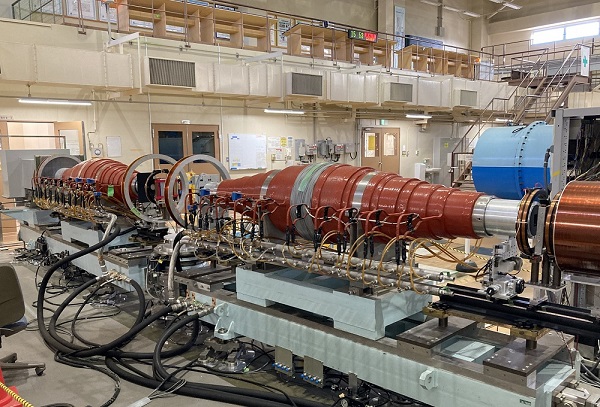
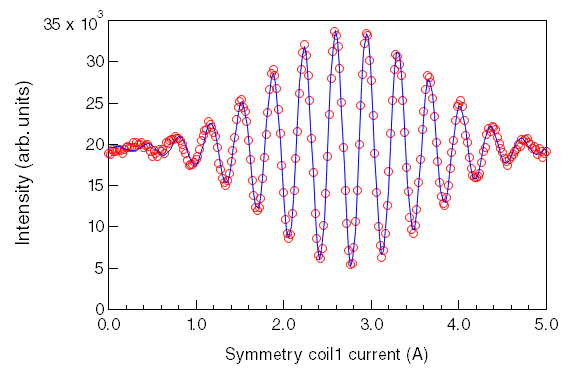
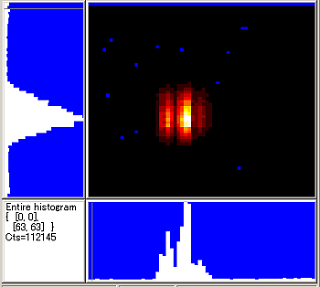
after ten years hibernation!
NSE method
The Neutron Spin Echo (NSE) method, invented by Mezei in 1972, uses neutron spin degrees of freedom to observe small energy changes of neutron interacted with atoms in a sample. NSE spectroscopy has the highest energy resolution down to neV-order in neutron scattering techniques. Currently, NSE instruments are operated at ILL in France (IN15 , WASP), at MLZ in Germany (J-NSE Phoenix, RESEDA (resonance type)), in USA (NIST, ORNL), and at J-PARC MLF BL06 (resonance type), and here iNSE at JRR-3 in Japan.
A conventional NSE setup uses the re-convergence of neutron spin direction in magnetic fields before and after of the sample position.
When the energy (velocity) of neutrons changes due to the scattering by the sample, the spin orientation is not restored, but is shifted from the initial orientation. Behind the second magnetic field, neutrons are detected by selecting the orientation of the spins, and the number of neutrons detected decreases when the spin orientation deviates from the initial one. By measuring the neutron intensity while slightly changing the difference between the first and second half of the magnetic field, a change in neutron intensity called the spin echo signal is observed (see the figure below). The degree of decrease in the amplitude of the echo signal reflects the change in neutron velocity, which can be analyzed to obtain information on the internal dynamics of the sample. The quantity measured by NSE is the intermediate scattering function I(Q, τ), which is the Fourier transform of the dynamic structure factor S(Q, ΔE) with respect to energy. The longer measurable correlation time (Fourier time) τ corresponds to higher energy resolution. τ is proportional to the magnetic field integral and the cube of the incident neutron wavelength.
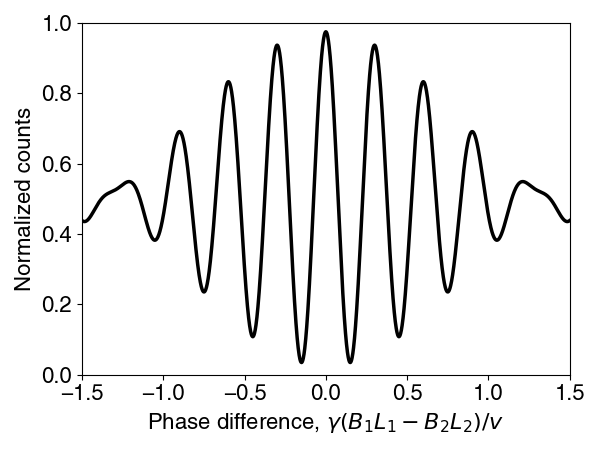
References
- [1] F. Mezei, "Neutron spin echo: A new concept in polarized thermal neutron techniques", Zeitschrift für Physik A 255, 146-160 (1972)
- [2] F. Mezei ed., "Neutron Spin Echo", Lecture Notes in Physics vol. 128, Springer-Verlag Berlin Heidelberg (1980)
- [3] M. Nagao, "Principle of neutron spin echo spectroscopy", Hamon Vol. 19, pp.42-48 (2009).

